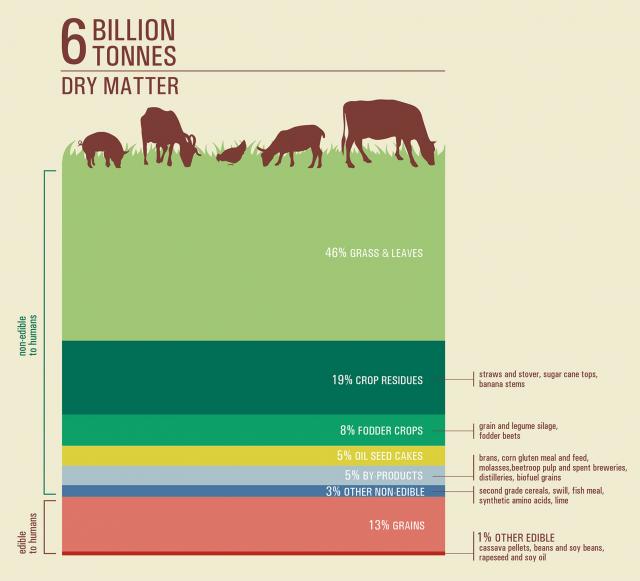86% of livestock animal feeds do not compete with food!
Worldwide, 86% of feeds used for livestock animal productions are not edible to humans and thus not competing with food. This is part of the conclusions of a study by Mottet et al., 2017
Animal productions represent 18% of energy (kcal) and 25% of global protein consumed by humans. They provide high-grade protein and micronutrients (e.g. vitamin A, vitamin B-12, riboflavin, calcium, iron and zinc) that cannot be readily obtained from plant-source foods alone. In addition, animal productions contribute a range of economical, environmental and social services. However, animal productions are regularly accused of using food or land intended for food production. Another point is that they are often reported to as poor converters of feed into food products.
This worldwide study shows that:
- among the 6 billion tonnes (dry matter) of feeds consumed annually by livestock, 86% are not edible to humans,
- within the 2.5 billion ha of land required for feed production 57% cannot be used for food production global feed production
- soybean meal accounts only for 4% of the global livestock feed intake,
- producing 1 kg of boneless meat requires less human-edible feed (2.8 kg vs. 3.2 kg) in ruminant than in monogastric production systems.


